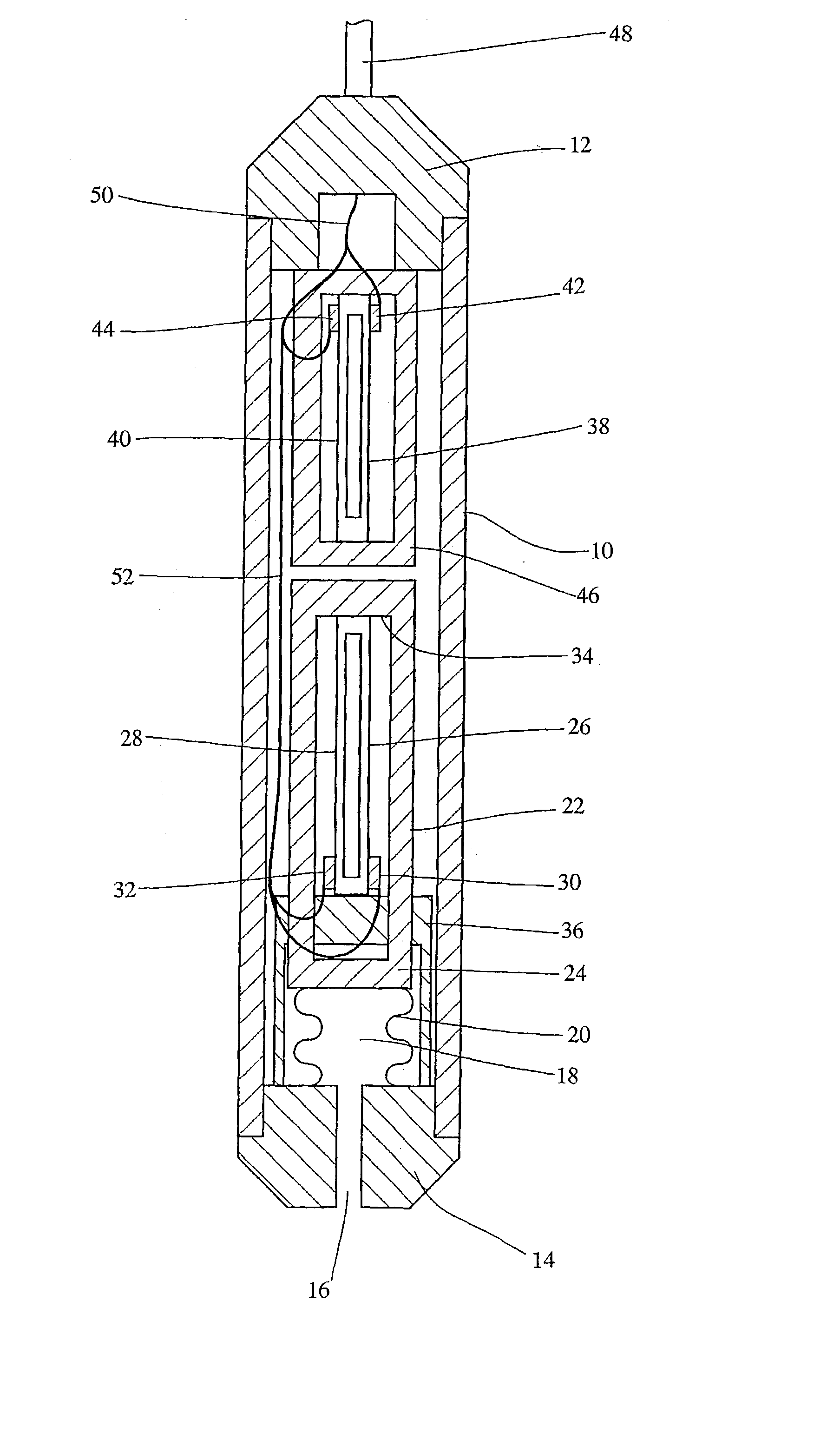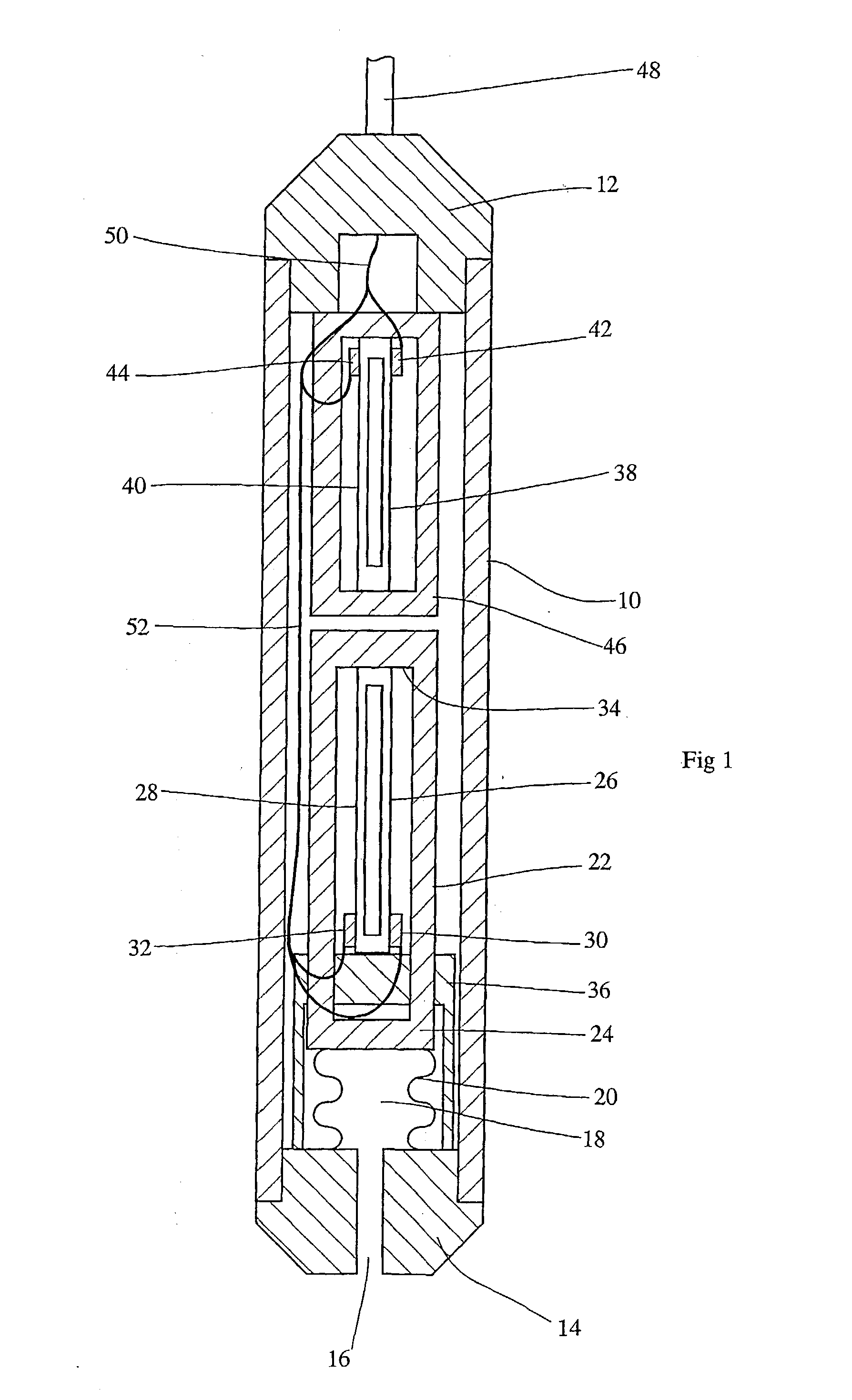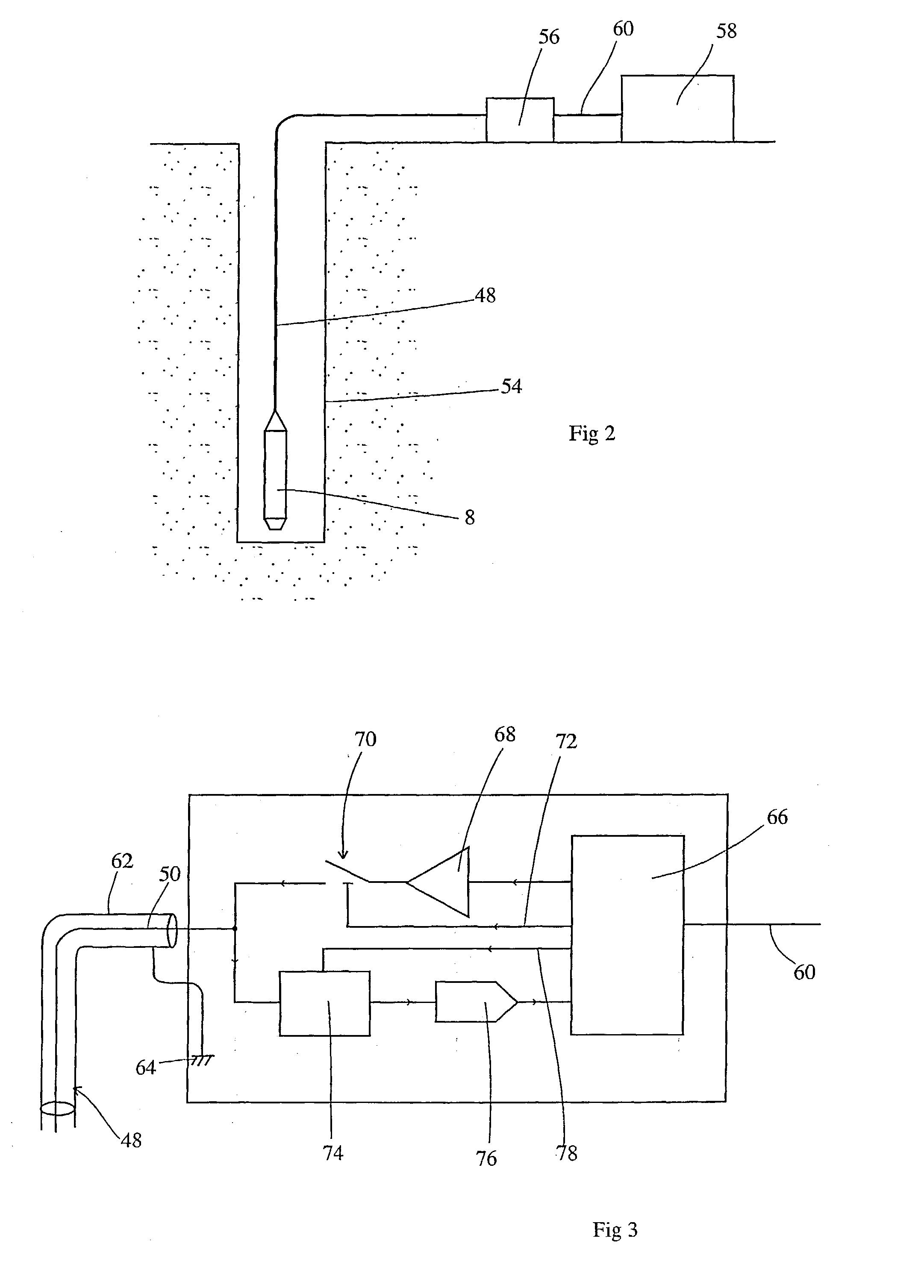Sensor apparatus
a technology of sensor and meter, which is applied in the field of sensor meter, can solve the problems of accelerating the aging and failure of electronic devices that are typically used in pressure and temperature, requiring extreme reliability of operation, and difficult and expensive to obtain multiple conductor cables
- Summary
- Abstract
- Description
- Claims
- Application Information
AI Technical Summary
Benefits of technology
Problems solved by technology
Method used
Image
Examples
Embodiment Construction
[0025] FIG. 1 shows a pressure and temperature gauge for use in oil and gas wells. A cylindrical pressure housing 10 is electron beam welded to a cablehead 12 at an upper end and a plug 14 at a lower end. In this description, upper and lower refer to orientations when the device is in its normal operating state within a well. This forms a sealed chamber that can withstand the high pressures required for this form of gauge. The fluid in the oil or gas well can enter via a pressure inlet 16 in the plug 14 and into an expansion volume 18 enclosed by bellows 20 sealed to the plug 14 at their lower end and to the base 24 of a closed-ended cylinder 22 at their upper end.
[0026] A pair of tines 26, 28 form a double ended tuning fork that is driven to vibrate in antiphase by a corresponding pair of PZT devices 30, 32. The fork thus formed is located within the cylinder 22, the upper end of the fork being attached to the inner face 34 of the upper end of the cylinder 22. The lower end of the ...
PUM
| Property | Measurement | Unit |
|---|---|---|
| pressure | aaaaa | aaaaa |
| resonant frequency | aaaaa | aaaaa |
| temperature | aaaaa | aaaaa |
Abstract
Description
Claims
Application Information
 Login to View More
Login to View More - R&D
- Intellectual Property
- Life Sciences
- Materials
- Tech Scout
- Unparalleled Data Quality
- Higher Quality Content
- 60% Fewer Hallucinations
Browse by: Latest US Patents, China's latest patents, Technical Efficacy Thesaurus, Application Domain, Technology Topic, Popular Technical Reports.
© 2025 PatSnap. All rights reserved.Legal|Privacy policy|Modern Slavery Act Transparency Statement|Sitemap|About US| Contact US: help@patsnap.com



